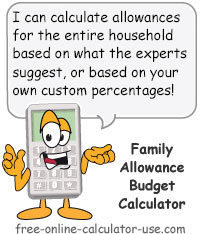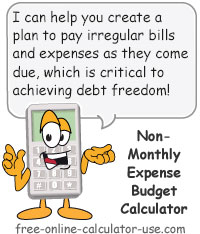IMPORTANT: Numeric entry fields must not contain dollar signs, percent signs, commas, spaces, etc. (only digits 0-9 and decimal points are allowed).
Click the Terms tab above for a more detailed description of each entry.
Step #1:
Enter your monthly net take-home pay.
Step #2:
Enter the amount you wish to divide up between your envelopes.
Step #3:
For each of your cash envelopes, enter the name, amount, and select the amount frequency. Then press the "+" button (may also appear as "Add" or "Add Envelope" depending on the size of your device).
Step #4:
When you are satisfied with your envelope entries, press the "Printer Friendly Report" button. This will open a new window containing your cash disbursement report, along with the list of the dollar denominations and their corresponding numbers and amounts.





Follow me on any of the social media sites below and be among the first to get a sneak peek at the newest and coolest calculators that are being added or updated each month.